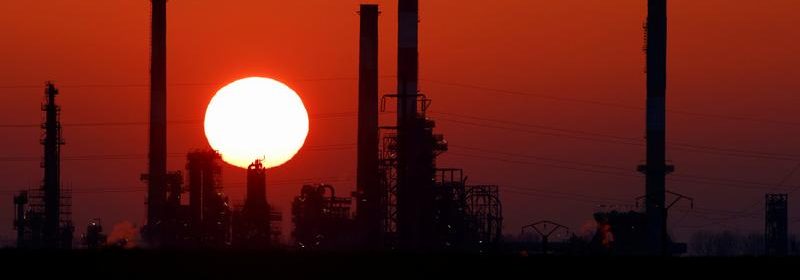Oil rises as U.S. vaccine progress raises demand expectations

SINGAPORE (Reuters) – Oil prices rose on Wednesday as signs of progress in the COVID-19 vaccine rollout in the United States, the world’s biggest consumer, raised demand expectations.
U.S. West Texas Intermediate (WTI) crude futures rose 15 cents, or 0.25%, to $59.90 a barrel by 0757 GMT, recovering from three days of losses.
Brent crude futures rose 24 cents, or 0.38%, to $62.94 a barrel after four days of losses.
“Ongoing stimulus measures, as COVID-19 vaccinations speed up, have boosted sentiment,” ANZ analysts wrote in a note.
The U.S. will have enough COVID-19 vaccine for every American adult by the end of May, President Joe Biden said on Tuesday after Merck & Co agreed to make rival Johnson & Johnson’s inoculation.
Futures were down earlier in the day amid uncertainty over how much supply the Organization of the Petroleum Exporting Countries (OPEC) and allies, together called OPEC+, will restore to the market at its Thursday meeting and a big build in U.S. crude inventories
The OPEC+ meeting on Thursday comes at a time when producers are generally positive on the oil market outlook compared with a year ago when they slashed supply to boost prices.
The market widely expects OPEC+ to ease production cuts, which were the deepest ever, by about 1.5 million barrels per day (bpd), with OPEC’s leader, Saudi Arabia, ending its voluntary production cut of 1 million bpd.
Still, an OPEC+ technical committee document reviewed by Reuters called “for cautious optimism,” citing “the underlying uncertainties in the physical markets and macro sentiment, including risks from COVID-19 mutations that are still on the rise”.
Reinforcing concerns of potential oversupply, the American Petroleum Institute industry group reported U.S. crude stocks rose by 7.4 million barrels in the week to Feb. 26, in stark contrast to analysts’ estimates for a draw of 928,000 barrels. [API/S]
However, that build occurred while U.S. refining capacity was shut during the survey week because of cold weather in Texas. Refinery runs fell by 1.75 million bpd, the API data showed.
“The recent selloff may help reinforce Saudi’s cautious stance and delay any production increase,” said Stephen Innes, global market strategist at Axi.
“It’s probably something that could sway the OPEC+ increase more back toward the 500,000 bpd as opposed to the 1.5 million bpd,” he said.
Source: Read Full Article
